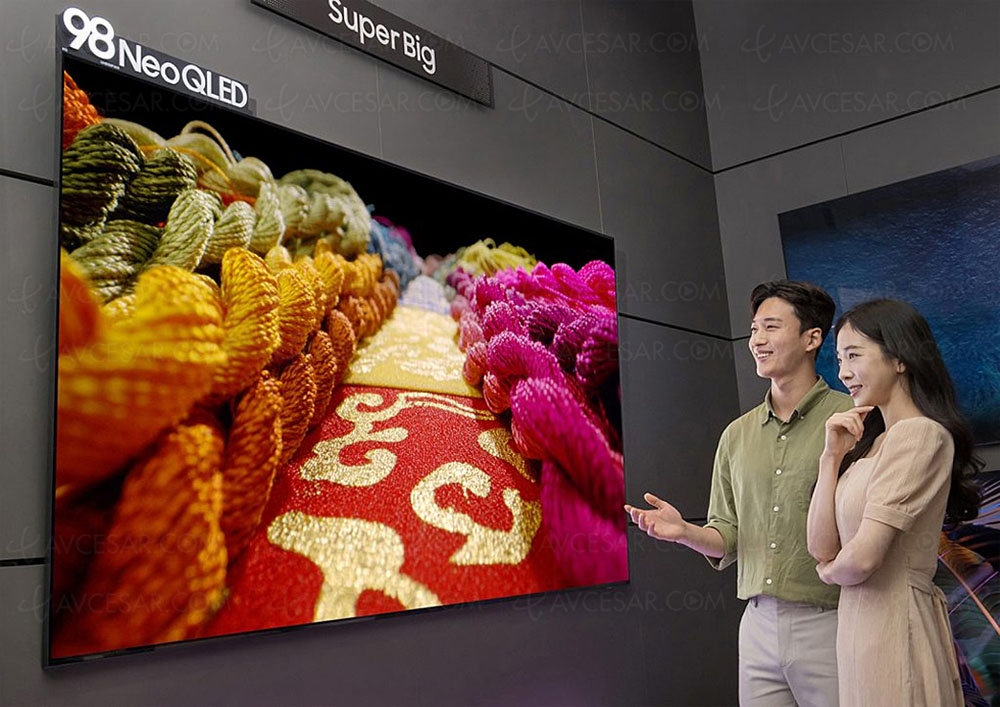At the time of writing, the Samsung QN98QN100B (98'', 249 cm) is the only representative of its series. It illustrates Samsung's desire to develop the market segment of very large screens at affordable prices.
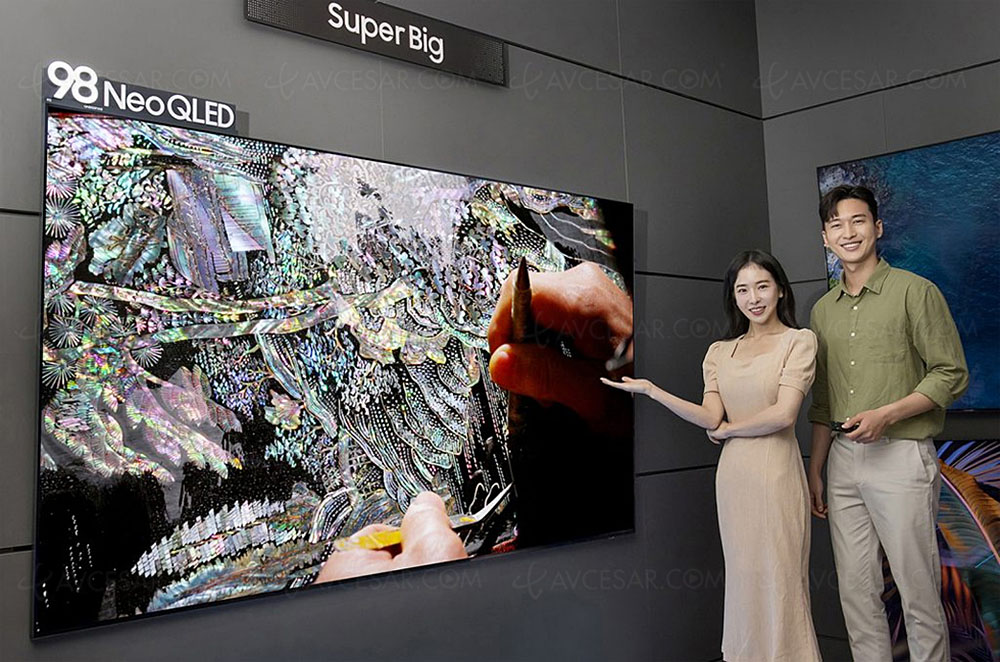
Samsung QN100B, focus on design
The design is one of the key developments of the QN98QN100B, with a thickness of only 19.9 mm, reduced by 35% and an all-metal finish. For the rest, if the frame of the panel remains very thin, its thickness is greater than that of the Samsung QN95B, Samsung QN700B, Samsung QN800B and Samsung QN900B 4K UHD TVs. However, it remains discreet and quickly goes unnoticed at a viewing distance of 2/3 meters. We also notice the presence of the One Connect box.
Samsung QN100B, main specs
In terms of specifications, the Samsung QN100B Ultra HD 4K QLED TV incorporates a native 10-bit and 100 Hz LCD panel. It also benefits from the Neo Quantum Processor+ processor.

Samsung QN100B, several thousand Mini LEDs
Regarding the quality of the blacks displayed on the screen, the new Mini LED backlighting system developed by the brand's engineers (see our CES 22 news > Samsung 2022 Neo QLED TV with Quantum Mini LED and Quantum Matrix) has several thousands of diodes and many areas. The light peak is progressing compared to other Samsung 2022 UHD 4K TVs (and even some 8K UHD) with 5,000 nits announced.
In addition to the switch to Mini LED technology, Samsung is also announcing better electrical management of each area of the backlighting system and optimized management of light leaks. As explained in our news on the Quantum Matrix process, this allows fine management of the quantity of current sent to each of the LEDs (Local Power Distribution) and internal upsampling of the gray scale to 14 bits (compared to 12 bits in 2021) to achieve vastly more accurate color grading and a noticeably wider displayed palette. It also allows in tone-on-tone images to reveal many additional details for richer textures and increased readability.

The end result offers an even more abysmal rendering of blacks and even brighter whites, on very small surfaces, for tenfold shine effects. Regarding light leaks, their perfect management has the effect of eliminating the Blooming phenomenon. These are more than interesting elements for an unprecedented HDR experience, knowing that the QN100B screen manages HDR10, HDR10+, HDR10+ Adaptive and HDR HLG.
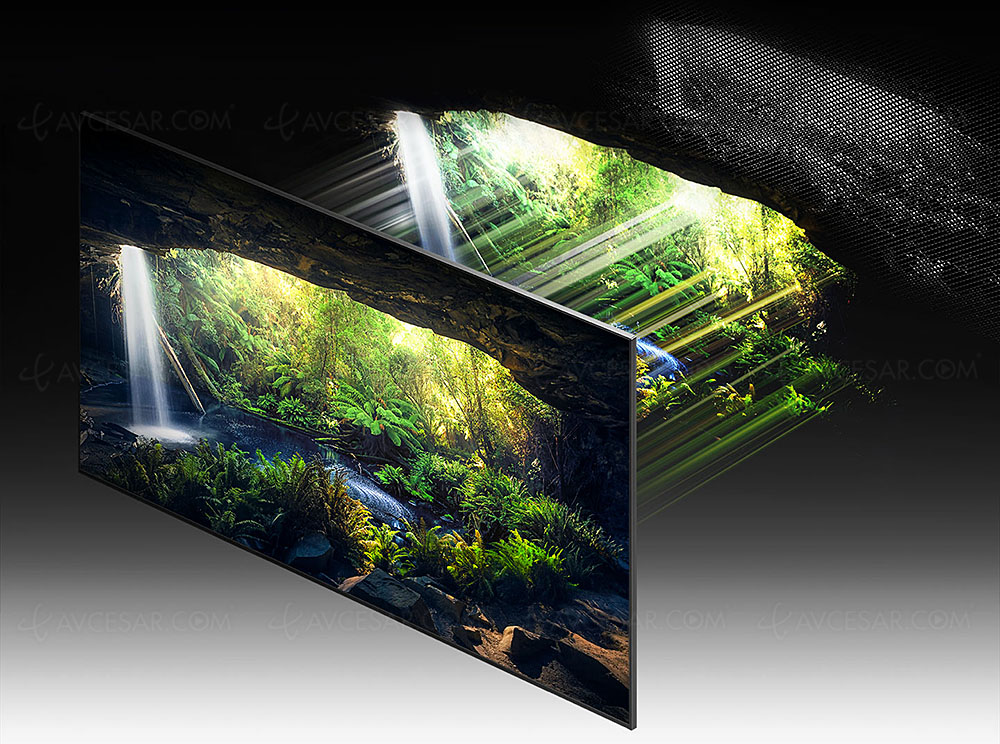
Of course, the LCD panel and its QLC (Quantum Light Control) coating, with an extremely low reflectance index (reflections are almost non-existent) and a wider viewing angle via Ultra Viewing Angle technology Technology (inaugurated in 2019), is still in place in 2022. And it's a very good thing, its efficiency amazed us so much.
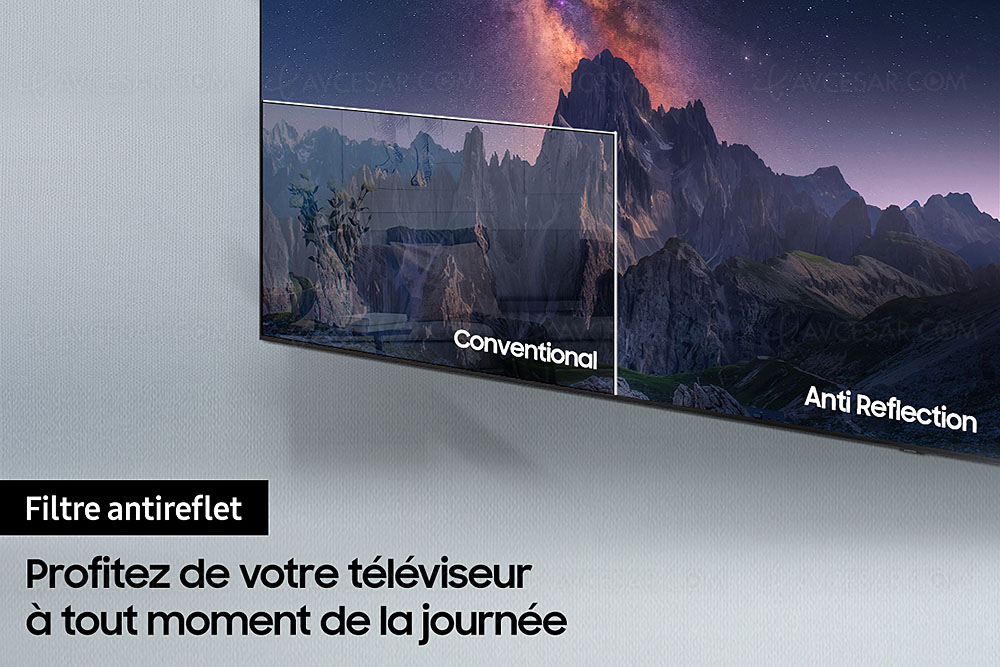
Samsung QN100B, Adaptive Sound+, AVA, OTS+ and Dolby Atmos
The sound section is also featured on the Samsung QN90B TVs. The first concerns the OTS+ process. This has a total of fourteen speakers placed at the back of the screen (6.4.4 system) for a total power delivered of 120 W but above all, compatibility of Dolby Atmos tracks.
For the rest, we find the Q-Symphony function. The latter consists, always, in the presence of a connected Samsung Q-Series 2020/2021/2022 soundbar, of taking advantage of the television speakers in addition to those of the soundbar to magnify the sound reproduction, its breadth and its spatialization.
Indeed, until now, when a soundbar is connected to a TV, the latter's speakers are then disconnected. With the Q-Symphony system signed by Samsung, they remain active and contribute greatly to the perceived audio improvement. Namely, if the soundbar is connected wirelessly to the television (via Wi-Fi), the management of Dolby Atmos soundtracks is of course also provided wirelessly.
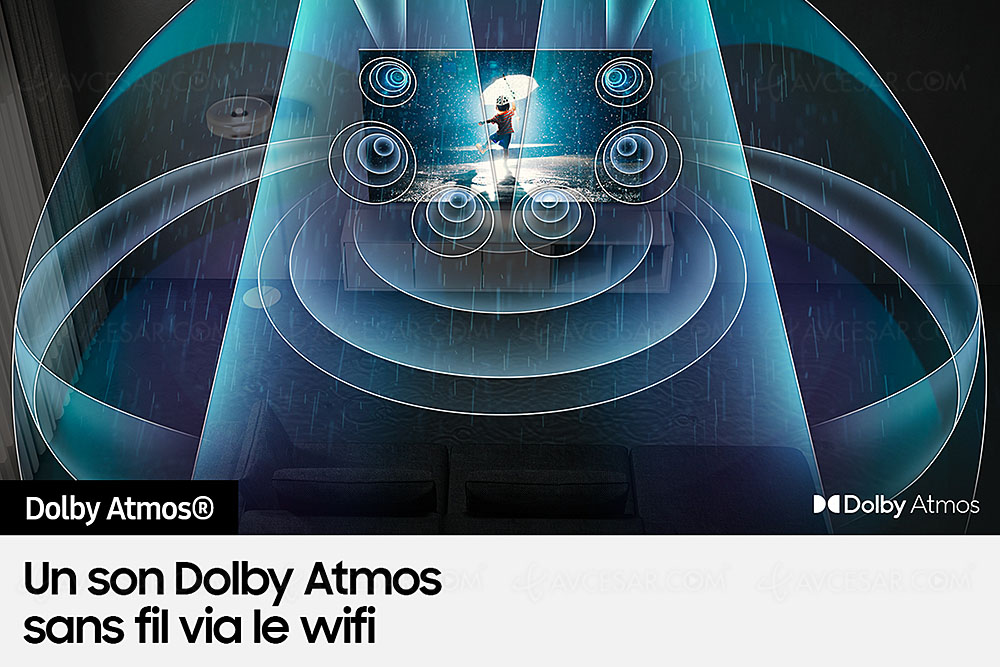
The Adaptive Sound+ function, an evolution of the Adaptive Sound still capable of adapting the audio settings of the TV in real time according to the image displayed, now takes the listening room into account. Otherwise, the AVA (Active Voice Amplifier) function is still required, intended to cover new noise in the TV environment, automatically. For example that of a kettle or a vacuum cleaner which will be covered by an increase in volume managed directly by the TV. Don't panic, the TV lowers the sound, automatically always, when the noise stops.
More details later. Indicative price still unknown. However, the price displayed in South Korea, 45 million won, suggests a retail price in France of between €30,000 and €35,000.
